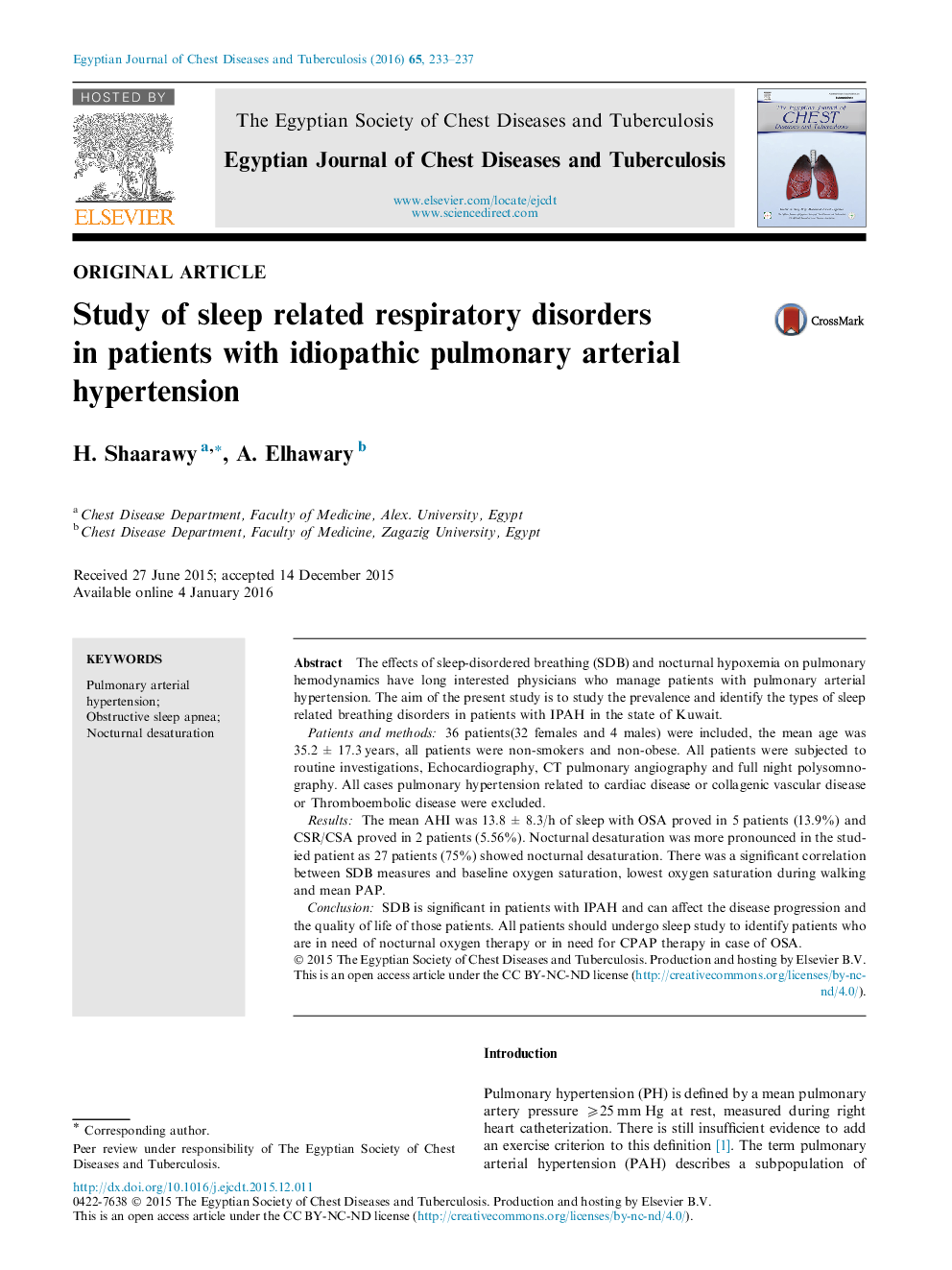| Article ID | Journal | Published Year | Pages | File Type |
|---|---|---|---|---|
| 3399909 | Egyptian Journal of Chest Diseases and Tuberculosis | 2016 | 5 Pages |
The effects of sleep-disordered breathing (SDB) and nocturnal hypoxemia on pulmonary hemodynamics have long interested physicians who manage patients with pulmonary arterial hypertension. The aim of the present study is to study the prevalence and identify the types of sleep related breathing disorders in patients with IPAH in the state of Kuwait.Patients and methods36 patients(32 females and 4 males) were included, the mean age was 35.2 ± 17.3 years, all patients were non-smokers and non-obese. All patients were subjected to routine investigations, Echocardiography, CT pulmonary angiography and full night polysomnography. All cases pulmonary hypertension related to cardiac disease or collagenic vascular disease or Thromboembolic disease were excluded.ResultsThe mean AHI was 13.8 ± 8.3/h of sleep with OSA proved in 5 patients (13.9%) and CSR/CSA proved in 2 patients (5.56%). Nocturnal desaturation was more pronounced in the studied patient as 27 patients (75%) showed nocturnal desaturation. There was a significant correlation between SDB measures and baseline oxygen saturation, lowest oxygen saturation during walking and mean PAP.ConclusionSDB is significant in patients with IPAH and can affect the disease progression and the quality of life of those patients. All patients should undergo sleep study to identify patients who are in need of nocturnal oxygen therapy or in need for CPAP therapy in case of OSA.
